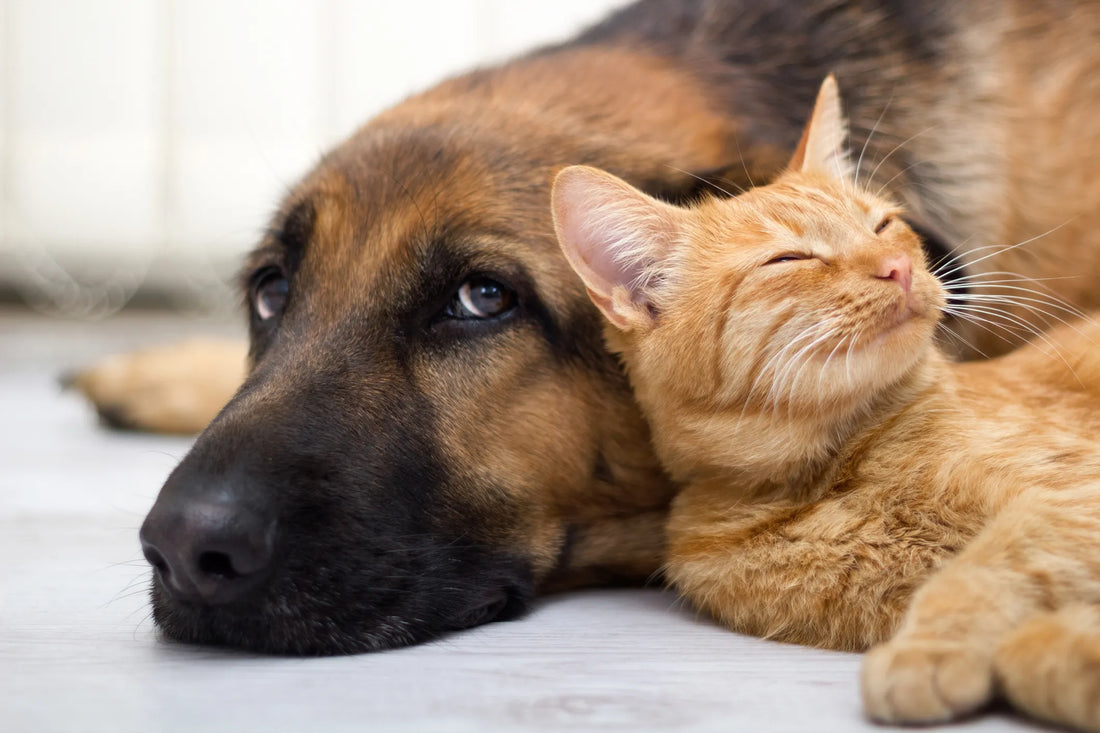
Understanding Your Pet’s Protein Requirements
Share
Protein is a crucial nutrient for dogs and cats, supporting their growth, muscle maintenance, and overall health. Despite its importance, there’s often confusion about how much and what type of protein pets need. In this article, we’ll explore protein requirements based on AAFCO (Association of American Feed Control Officials) standards. We will also examine different protein sources and their quality. Additionally, we will discuss when varying levels of protein are necessary.
Understanding Protein Needs
Dogs:
Dogs are omnivores and need a balanced diet with enough protein for muscle maintenance, immune function, and energy. According to AAFCO guidelines, adult dogs need a least of 18% crude protein on a dry matter basis. Puppies and lactating females need at least 22.5%. However, individual factors like age, activity level, and health can influence protein needs. Highly active dogs, like working or sporting breeds, often require higher protein levels. This helps maintain muscle mass and supports energy expenditure.
Cats:
Cats are obligate carnivores, meaning their diet must be rich in animal-based proteins. AAFCO recommends a minimum of 26% crude protein for adult cats and 30% for kittens and pregnant or nursing cats. Cats have a higher need for specific amino acids like taurine and arginine, which are found primarily in animal tissues. Without these essential nutrients, cats can suffer from severe health issues, including heart and vision problems.
Protein Sources: Quality and Digestibility
Animal-Based Proteins:
Animal proteins, such as chicken, beef, turkey, fish, and eggs, provide complete amino acid profiles and are highly digestible. Eggs, in particular, are often considered the gold standard for protein quality due to their high biological value. Meat meals, like chicken meal or fish meal, can be excellent sources. They offer concentrated protein when sourced from high-quality ingredients.
Plant-Based Proteins:
Plant proteins, such as soy, peas, and lentils, are sometimes used in pet foods. They can contribute to overall protein content. However, they often lack certain essential amino acids. They also tend to be less digestible compared to animal proteins. Cats, in particular, may struggle to meet their nutritional needs on diets high in plant-based proteins due to their unique metabolic requirements. Recent studies have suggested a potential link between diets high in lentils and an increased risk of dilated cardiomyopathy (DCM) in dogs. This raises concerns about the long-term safety of these ingredients in large amounts.
By-Products:
Meat by-products, including organ meats, can be highly nutritious and provide essential vitamins and minerals. When sourced and processed properly, by-products can offer high-quality protein and valuable nutrients that contribute to a balanced diet.
Homemade High-Protein Diets:
A growing trend has emerged toward feeding homemade diets with very high protein levels. Many believe, mistakenly, that more protein automatically means a healthier pet. However, excessively high protein diets are not necessary to meet the nutritional requirements of most dogs and cats. Balanced homemade diets should focus on meeting all essential nutrients—not just maximizing protein—and require careful formulation to avoid deficiencies or imbalances. Consulting with a nutritionist is highly recommended when creating homemade meals for pets.
Special Considerations
Increased Energy Requirements:
Dogs and cats with higher energy needs—such as working dogs, performance dogs, and lactating queens—need diets rich in protein. This supports metabolic demands and helps maintain muscle mass. In these cases, protein levels above AAFCO minimums may be necessary.
Health Conditions:
Certain medical conditions can affect protein requirements. Dogs and cats with kidney disease, for example, often benefit from controlled protein levels to reduce the workload on their kidneys. Conversely, pets recovering from illness or surgery may need more protein to aid in tissue repair and recovery.
Conclusion
Meeting the protein needs of dogs and cats involves more than just hitting a percentage. It’s about providing high-quality, digestible protein sources. These sources should be tailored to their life stage, activity level, and health status. By understanding AAFCO guidelines and choosing the right protein types, pet owners can support their pets’ long-term health and well-being. Consulting with a nutritionist helps tailor dietary advice for each pet. This approach ensures they obtain the optimal balance of nutrients for their unique needs.
